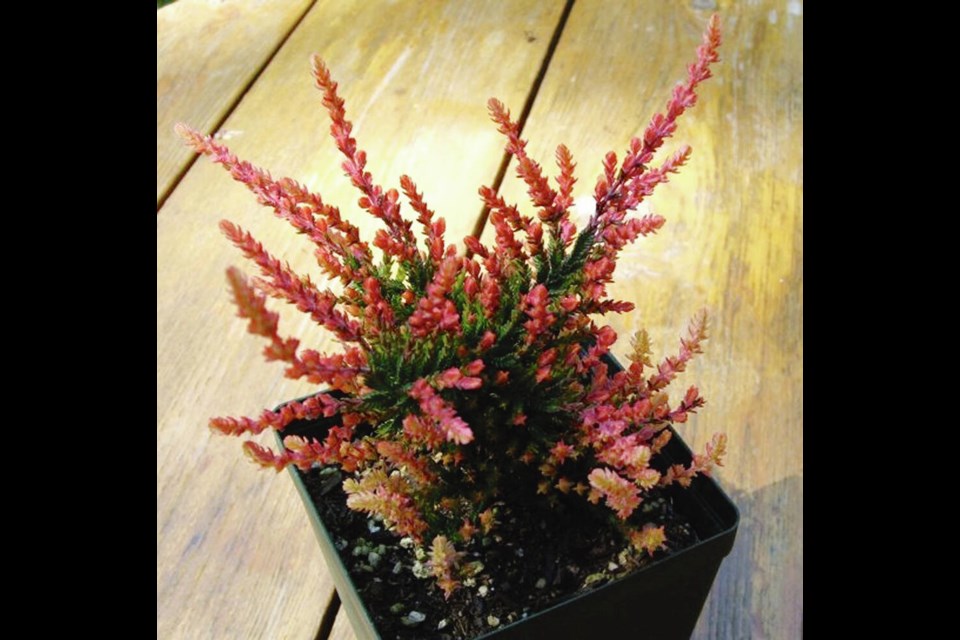Dear Helen: As the garden’s growing season begins, I’d appreciate a few basic guidelines on choosing plants and settling them successfully into a landscape for long-term enjoyment. What mistakes are most commonly made?
C.L.
A little planning, preparing and patience all help to ensure long-term good health in plants. A few thoughts:
Right plant/Right place. First assess the site. Measure the area available for a plant or plants. Is the site in sun or shade? Is the soil fertile and humus-rich? Does it hold on to moisture well or does it dry out quickly in summer?
Next, decide what kind of plant(s) you desire in the site. If it’s a shrub you want, do you prefer evergreen or deciduous? Are flowers important?
As you begin looking for plants, check labels. You are on a match-making mission to find a plant whose requirements match those of your planting site’s conditions. Most labels give a plant’s needs for sun exposure and soil moisture. Note the plant’s ultimate height and spread, to made certain it will fit without eventual crowding into the location you have for it.
Soil preparation. Here is where a planting project so often goes awry. Digging a small hole in the site and plunking the plant in is what happens too often.
Instead, clear the ground of weeds and debris, and incorporate into a broad area, at least three or four times the width of the plant’s root ball, a generous layer of a nutritious compost, a balanced fertilizer, and lime except for acid loving plants.
Planting. Dig a hole a little wider and deeper than the pot. Check that the soil is moist, and slip the plant out of its container. Check the roots. If they have been running laps around the pot, they need to be teased away and spread outward. With clean cuts, shorten overlong roots.
If roots have become a solid mat, use a root knife or fine saw to cut off a thin slice from the bottom and also from the sides if necessary. Gently loosen roots and settle the root ball into the hole, adding firmed soil underneath it enough to make sure the plant ends up at the same soil level it was in the pot — unless the label indicates otherwise. Firm the soil down and around the plant as you fill in the hole.
Most soils will be fully moist for late winter and early spring plantings. If the soil is even a little on the dry side, add water to the partly filled hole and let it drain out before filling in the hole and tamping it down with gentle firmness.
Mulch. Finish up by spreading a mulch layer of your own or a purchased compost, placing it over the entire prepared site except for the area close to the stem(s) of the plant.
Dear Helen: I usually take my tuberous begonias out of storage in early March. The tubers are the same ones I’ve grown for several years. Some have grown broad, and produce many shoots. My question: Can begonia tubers be divided without damaging their ability to grow and bloom?
K.P.
Large begonia tubers can be divided by making a clean slice through the tuber, top to bottom, making sure each piece has one or more shoots. Do this when the shoots are around 12 mm long.
When I divide tubers, as a precaution I let the cut surfaces dry for a few hours and then rub them with powdered sulphur before settling the sections into a lightweight, all-purpose potting mix for rooting.
GARDEN EVENTS
Garden Design. Dinter Nursery, 2205 Phipps Rd. in Duncan, is presenting a Garden Design 101 workshop on Saturday, March 2, from 10 to 11 a.m. Monica, owner of Dockerty Gardens, will cover site assessment, creating a plan, groundworks, and plant selection. Cost is $10 plus GST. Space is limited. Register in advance at the nursery or at 250-748-2023.
Seedy in Courtenay. Comox Valley Growers and Seed Savers are hosting a Seedy Saturday event on March 2, 10 a.m. to 3 p.m. in the Florence Filberg Centre, 411 Anderton Ave. in Courtenay. Forty vendors will offer seeds, garden supplies and information. Details at cvgss.org.
Nanaimo seedy. Nanaimo’s Seedy Sunday on March 3, 10 a.m. to 3 p.m., will feature 60 vendors with seeds, plants, and gardening information. Nanaimo District Secondary School, 355 Wakesiah Ave.



